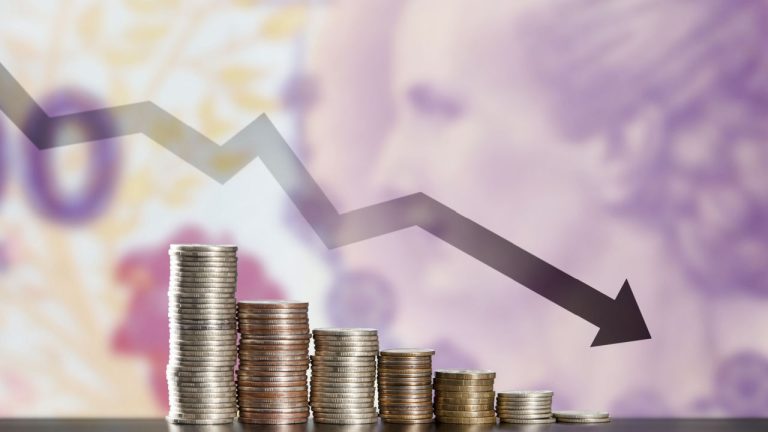Argentine Peso Loses Almost 12% Against the Greenback During January; Inflation Projected to Rise Sharply

The Argentine peso has fallen consistently against the U.S. dollar this month, losing almost 12% since Jan. 1. The behavior of the exchange rate for the informal “blue” dollar keeps bringing concerns about a possible escalade in inflation rates, that are predicted to reach almost 100% this year, similar to the rates registered in 2022.
Argentine Peso Keeps Falling
Argentina is currently submerged in a devaluation scenario that has the possibility of causing an escalation in prices this year. The value of the Argentine peso against the U.S. dollar has fallen by almost 12%, reaching a record-high rate of 386 pesos per dollar on Jan. 27 in its ‘blue‘ variation.
The exchange rate has been constantly rising since December, when it reached 356 pesos per dollar, breaking a record low for the peso at that time. The government has made movements to maintain its stability, injecting dollars to satisfy the demand of registered importers into the market and announcing a purchase operation of more than $1 billion of its own external debt.
However, this seems to have achieved just the opposite, and now local analysts are worried about the balance of the country’s reserves after this disbursement, which would affect the capabilities of the central bank. María Castiglioni Cotter, head of an economic counseling firm, criticized the measure, stating that it has no sense while the country is facing a budget deficit.
Inflation and the Coming Crises
This continued fall in the value of the Argentine peso is already affecting the prices that citizens have to pay for goods and services, even when the government has applied a series of measures to limit the price rise of several products. Calculations made by private firms predict an inflation rate of more than 5% in January, a high number when compared with countries like Brazil, which is projected to register a rise of less than half a point.
Salvador Di Stefano, another local analyst, believes that the debt purchase operation might accentuate the problems the state is currently facing. Di Stefano stated that this might affect the amount of foreign currency available for imports, causing the economy to slow down even more.
According to him, the dollar will keep falling as the government tries to inject dollars to stop the depreciation of the peso, a similar strategy that president Macri used back in 2018. Also, public spending would accentuate this devaluation, as the government is expected to ramp it up due to the proximity of the elections. Private analysts expect Argentine inflation to reach over 95% this year.
What do you think about the Argentine peso devaluation and its effect on inflation rates? Tell us in the comments section below.
from Bitcoin News https://ift.tt/aCk6Q3V
Comments
Post a Comment